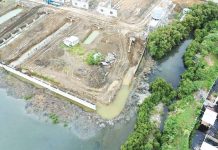
EVACUEES from Kanlaon Volcano in La Castellana, Negros Occidental, are once again in the headlines.
On Monday, June 30, around 100 evacuees abruptly left the evacuation center — the Senior High School building of La Castellana National High School — without informing the camp management.
Their departure came to light only through Facebook posts, prompting local authorities to track them down and plead for their return.
All of them hail from Barangay Cabagnaan, which lies entirely within Kanlaon Volcano’s six-kilometer danger zone and has been declared a no man’s land.
No Forcible Extraction
On Tuesday, July 1, I spoke with John de Asis, the municipal disaster risk reduction and management officer. He confirmed that the evacuees had refused to return despite repeated appeals.
I then contacted Raul Fernandez, head of the Regional Kanlaon Task Force, to ask about their next steps. His response was clear: “No forcible extrication to happen.”
Instead, he said that Donato Sermeno III, regional director of the Office of Civil Defense (OCD) for Negros Island Region, has been tasked to initiate a dialogue with the concerned evacuees.
‘Pasaway’ but Understandable
Asked for her reaction, La Castellana vice mayor Mhai-Mhai Nicor-Mangilimutan expressed empathy for the 4,048 evacuees who have endured life in evacuation centers or makeshift tents for the past seven months.
Fifth District’s Cong. Dino Yulo even remarked, “Maybe it’s even better that they’re misbehaving (pasaway) a bit, so their problems will be noticed.”
He acknowledged the evacuees’ frustrations and hardships, and underscored the pressing concern: “There’s still no clear plan for what will happen in the next three months, six months, or even next year. That’s deeply troubling.”
But the congressman’s parting words were the most jarring: “They are now physically tired, emotionally disturbed, mentally distressed, and sexually deprived.”
At the Heart of the Matter
The core issue remains the lack of a permanent relocation site for Kanlaon evacuees.
With the volcano still restless, residents from within the six-kilometer danger zone remain in limbo, uncertain how long they must remain displaced.
Mayor Mhai-Mhai said it is the responsibility of the provincial government to identify a relocation site.
Gov. Bong Lacson previously disclosed that negotiations were ongoing for possible sites in Barangays Lalagsan and Talaptap. However, land prices are steep, and the landowners seem uninterested in selling.
But that raises a valid question: Why negotiate at all?
Power of Eminent Domain
If Governor Bong Lacson truly wants to ease the plight of Kanlaon evacuees, then he must act decisively by acquiring the lands approved by the Mines and Geosciences Bureau (MGB) through the State’s power of eminent domain.
What is eminent domain?
It is an inherent power of the state — also known as expropriation or compulsory purchase — to acquire private property for public use, even without the owner’s consent, as long as just compensation is provided.
Delayed Action, Mounting Frustration
The search for a relocation site began as early as February, when the Philippine Institute of Volcanology and Seismology (PHIVOLCS) warned of a possible major Kanlaon eruption — whether magmatic or pyroclastic. But to this day, it remains just talk.
Is the provincial government truly serious about helping Kanlaon evacuees? Time is running out, and the evacuees’ patience is wearing thin.
Governor Bong would do well to reflect on the words of American entrepreneur and motivational speaker Jim Rohn: “Without a sense of urgency, desire loses its value.”
With the situation in La Castellana growing increasingly volatile, Rep. Dino is right: “The Kanlaon crisis is far from over!”
The question now is: Is this crisis becoming a fate worse than death?
We pray it isn’t.
Governor Lacson must understand the full extent of the law and act accordingly. He must never forget: “Mas ligtas ang may alam!”/PN







